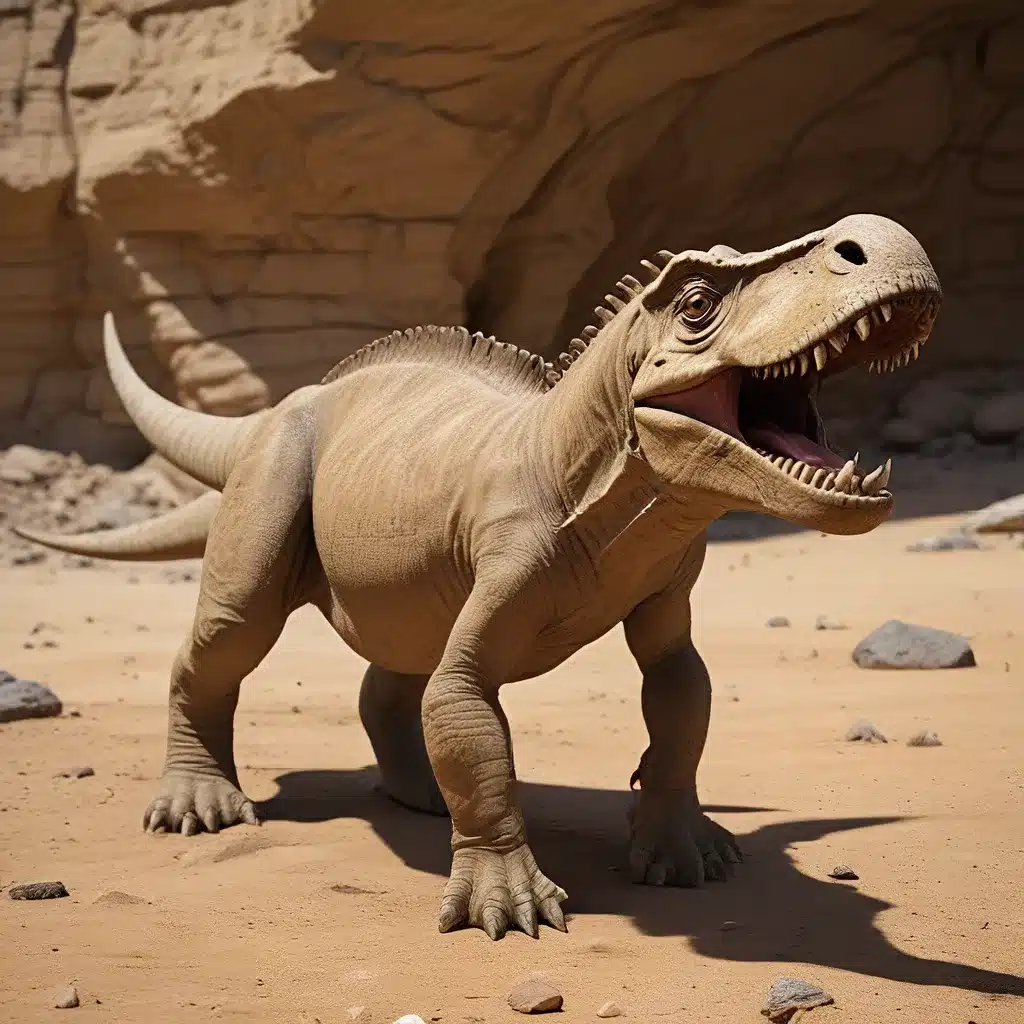
The Enigmatic Homalocephale: Unveiling the Mysteries of an Ancient Lineage
The Pachycephalosauridae family, or “thick-headed lizards,” represents a fascinating and often misunderstood group of dinosaurs from the Late Cretaceous period. At the forefront of this enigmatic lineage stands the genus Homalocephale, a small but intriguing member of the pachycephalosaurid family.
Discovered in the Gobi Desert of Mongolia and described in 1974 by Osmólska, Homalocephale, whose name means “even-headed,” is believed to have roamed the earth approximately 80 million years ago. This diminutive dinosaur, measuring around a meter in height, was one of the earliest and most primitive members of the pachycephalosaurid clan.
Unlike its more well-known cousin, the dome-headed Pachycephalosaurus, Homalocephale was characterized by a flatter, less pronounced cranial dome. This unique feature has long been a source of debate among paleontologists, with some suggesting that Homalocephale may have represented a juvenile stage of the more famous pachycephalosaurid species.
However, recent studies have challenged this notion, proposing that Homalocephale and Pachycephalosaurus were in fact distinct genera, each with their own evolutionary trajectory. The discovery of Homalocephale juvenile fossils, complete with their characteristic flat-domed skulls, has lent credence to the idea that this species maintained its unique cranial structure throughout its lifespan.
The Evolutionary Conundrum: Reconciling the Flat-Domed and Dome-Headed Pachycephalosaurs
The ongoing debate surrounding the relationship between Homalocephale and Pachycephalosaurus highlights the complexity of understanding the evolutionary history of the pachycephalosaurid family. As new fossil evidence emerges, paleontologists continue to grapple with the question of whether the flat-domed and dome-headed pachycephalosaurs should be classified as separate genera or if they represent a single, morphologically diverse lineage.
One hypothesis suggests that the flat-domed Homalocephale and its kin may have been the precursors to the more derived, dome-headed Pachycephalosaurus. This idea posits that the gradual development of the distinctive cranial dome was a key evolutionary adaptation, perhaps serving as a means of display or defense.
Prenocephale, another flat-domed pachycephalosaurid, has further complicated the picture, as its fossils have been found to exhibit both flat-domed and dome-headed morphologies, even within the same individual. This observation has led some researchers to suggest that the presence or absence of a pronounced dome may have been influenced by factors such as age, sex, or environmental conditions, rather than representing a clear-cut taxonomic division.
Uncovering the Secrets of the Pachycephalosaurian Lifestyle
Alongside the ongoing debate surrounding the evolutionary relationships within the pachycephalosaurid family, researchers have also sought to unravel the mysteries of these dinosaurs’ lifestyles and behaviors. The unique cranial features of Homalocephale and its kin have been the subject of intense scrutiny, with numerous hypotheses proposed regarding their functional purpose.
One of the most widely accepted theories suggests that the thick, dome-like skulls of pachycephalosaurs were used for head-butting, either in the context of intraspecific competition or as a means of defense against predators. The flat-domed Homalocephale, with its less pronounced cranial feature, may have utilized this behavior to a lesser extent than its more derived counterparts, perhaps relying on other adaptations for survival.
Recent studies have also explored the possibility that the pachycephalosaurid skull structure may have played a role in thermoregulation, with the dome-like feature potentially serving as a heat-dissipating mechanism. This hypothesis is supported by the discovery of pachycephalosaurid fossils in high-latitude regions, such as the Prince Creek Formation in Alaska, where the dinosaurs would have faced the challenge of adapting to colder climates.
The Enduring Legacy of the Pachycephalosaurian Kingdom
As paleontological research continues to shed light on the intricate lives of the pachycephalosaurid dinosaurs, the legacy of these enigmatic creatures remains a testament to the ongoing evolution of our understanding of the distant past.
The Lost Kingdoms blog is dedicated to exploring the fascinating world of ancient civilizations and the insights they provide into the human experience. By delving into the mysteries of the pachycephalosaurid lineage, we can gain a deeper appreciation for the remarkable diversity and adaptability of life on our planet, even in the most distant eras of Earth’s history.
Through the lens of paleontology, we are invited to imagine the ancient landscapes where Homalocephale and its kin once roamed, thriving in the face of the ever-changing environmental conditions that defined the Late Cretaceous period. By piecing together the clues left behind in the fossil record, we can begin to unravel the complex narratives of these forgotten relics of the pachycephalosaurian kingdom, and in doing so, expand our understanding of the remarkable, resilient, and often surprising story of life on Earth.
Embracing the Mysteries of Dinosaur Paleontology
As the field of dinosaur paleontology continues to evolve, the story of the pachycephalosaurid dinosaurs serves as a poignant reminder of the ongoing challenges and discoveries that shape our understanding of the past. From the debates surrounding the taxonomic classifications of Homalocephale and Pachycephalosaurus to the insights gleaned from the fossil evidence, the study of these enigmatic creatures exemplifies the dynamic nature of scientific inquiry.
By embracing the mysteries that still linger around the pachycephalosaurid lineage, we acknowledge the limitless potential for new discoveries and the ever-evolving nature of our knowledge. The journey of uncovering the secrets of the forgotten relics of the pachycephalosaurian kingdom invites us to approach the past with a sense of wonder, humility, and a deep appreciation for the incredible diversity of life that has graced our planet.
As we continue to explore the rich tapestry of dinosaur paleontology, the story of Homalocephale and its kin serves as a powerful reminder of the importance of maintaining an open and inquisitive mindset. By embracing the unknown and celebrating the ongoing process of scientific discovery, we can continue to unravel the captivating tales hidden within the annals of deep time, and perhaps uncover more of the lost kingdoms that have captured our collective imagination for generations.


